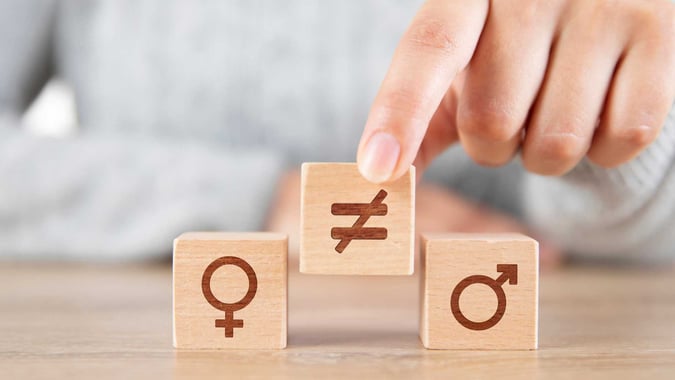.jpg?width=352&name=FMCG%20Sales%20-%20Blog%20(3).jpg)
5 ways gender inequality is affecting your career as a woman
By: Kristan De Sousa

Kristan De Sousa discusses the contributing factors of gender inequality in Australian workplaces as part of the Six Degrees Executive ‘Women and Careers’ series.
“We cannot change what we are unaware of, and once we are aware, we cannot help but change” - Sheryl Sandberg, Facebook COO.
Over the last decade, leading organisations such as the OECD, Goldman Sachs, McKinsey and Company and the Workplace Gender Equality Agency have produced studies evidencing that the economic argument for gender equality is firmly established, clear and compelling.
The Facts
According to Goldman Sachs, gender inequality results in the forfeiture of a 20% increase in GDP for every year that the problem goes unresolved. This figure represents an annual loss of around $300 billion to the Australian economy [1].
“Increasing female workforce participation by 6% has the potential to add $25 billion each year to the Australian economy.”
Yet despite the economic argument, gender equality has failed to gain traction in Australian businesses, resulting in the world’s top leaders at last year’s G20 Summit, stating that one of the most significant impediments to economic progress is related to the relative lack of female participation in the workforce [2].
While women in Australia comprise 45.9% of the full-time labour force, only 3.5% of CEOs of ASX500 companies are women [3]. However, there’s significant research that links gender equality and better organisational performance. One argument is that diversity brings together varied perspectives, produces a more holistic analysis of the issues an organisation faces and spurs greater effort, leading to improved decision-making.
Why the shortage of female talent at the executive level?
You may think that this is a pipeline or capability issue although, women have been graduating from universities at higher rates than men since 1985. On the basis of this evidence alone, there should be a large pool of female talent progressing through to executive leadership roles.
Here are just some of the contributing factors:
1. Childhood
Research suggests differential parenting methods of boys and girls during childhood play, in terms of the ability to take risks and be successful, promotes less self-confidence and self-esteem for women in work contexts [4] and promotes self-confidence in males around risk in later life. This difference in confidence and self-esteem could be attributed to why men are more likely than women to overestimate their ability to fulfil roles with which they are unfamiliar [5].
It is suggested that gendered personality traits established in childhood may be acting to produce disadvantages for women in judgements of their ability to accept or apply for promotion opportunities in the workplace [6].
Another factor in early life experiences to consider is the parental division of labour and how this is shaping children’s attitudes and beliefs.
According to a recent Harvard article the “working mother effect” actually improves future prospects, especially for adult daughters of mothers who worked outside the home before their daughters were 14 years old.
The working mother study found that women with working mothers performed better in the workplace, earning more and possessing more powerful positions than their peers with stay-at-home mothers.
Maybe it’s time to drop the guilt working mothers feel, after all?
2. Gender Stereotyping
People generally associate women with the domestic roles which involves child rearing and maintaining the family unit. Men are stereotypically associated with employment roles and especially roles that require the use of authority and assertive or self-confident behaviours [7].
In addition, married men who have wives who stay at home, are more likely to disfavour women in the workplace and make decisions that prevent the advancement of qualified women [8].
It begs the question: when are fathers, in positions of authority with the ability to effect change, going to make the link between the current inequality of women in the workforce and their own daughter’s career in the future?
3. The Double Bind
The ‘double bind’ is a common term that means women are evaluated negatively if they are too ‘feminine’ in their leadership style, as well as if they are too ‘masculine’.
Research consistently demonstrates that women are negatively evaluated when they engage in assertive behaviour, whereas men are not [9]. Additionally, studies have shown that women are evaluated negatively when they self-promote; whereas men are perceived as more competent when they engage in these behaviours [10].
Furthermore, studies show that there is a greater likelihood that a woman’s ideas will be overlooked in a group setting than a male’s ideas [11]. This is a common occurrence, whether you work in an mid-size business or The White House. A recent article published in The Washington Post explains how President Obama’s female staffers adopted a meeting strategy called “amplification”. When a woman made a key point, other women would repeat it, giving credit to its owner. This forced the men in the room to recognise the contribution — and denied them the chance to claim the idea as their own.
Amplification is a great way for women to support women in the workforce to ensure their voices and opinions are heard and recognised, especially when women are a minority working in male-dominated environments.
In addition, research shows men dominate senior levels of management as well as boards of directors, thus there is a tendency for these men to select males similar to themselves, thereby biasing against the selection of women [12].
4. The Glass Cliff
The reverse side of gender stereotyping and the double bind is the ‘glass cliff’ phenomenon where women obtain promotion into senior roles because of stereotypical perceptions around leadership attributes they bring to a role. This is often the nurturing stereotype where women are perceived to be better equipped to handle crisis roles by introducing a more open and inclusive leadership style, however the downside is that these roles pose a higher risk and are prone to failure [13].
Sure we can argue that it’s a positive outcome that women are seen to be capable of effecting change in crisis situations, but the reality is these roles are more likely to be harmful to future career progression.
Arguably, if women are viewed to be capable of driving cultural change in struggling or stagnating organisations, then imagine that effect they could have on a business not in crisis.
5. The Gender Pay Gap
Figures released last year by the Workplace Gender Equality Agency estimates that the Australian gender pay gap is roughly 17.9 per cent. However, the existence of a wage gap is not new, it has been evident since the beginning of the industrial revolution.
Variables which predict the greatest wage differences between men and women are marriage and parenthood. Men who are married or have children receive significantly higher wages than an equivalent woman [14].
Graduate Careers Australia report that the gap is present in graduate salaries too, with female graduates receiving 9.4% less in remuneration on average than male graduates upon entering the workforce, where career breaks or glass ceiling effects have no role to play.
Explanations offered for the persistence of the pay gap phenomenon include women’s acceptance of existing pay levels due to comparing their salaries to other women rather than comparing them to industry averages or to equivalent men [15] and women’s self-imposed silence around arguing for greater pay [16].
Without doubt, being a woman and establishing a corporate career has its challenges. While gender inequality exists, woman will have to navigate through uneven playing fields to receive the same remuneration and opportunities for progression as men.
However, it is not only individual woman that are impacted as a result of inequality, the Australian economy is missing out on the significant financial contributions women have the potential to offer.
I would love to hear from you if you have an experience you would like to share.
Related
.jpg?width=352&name=FMCG%20Sales%20-%20Blog%20(3).jpg)
.jpg?width=352&name=Untitled%20design%20(8).jpg)
B2B Sales: 2025 Trends & Hiring Challenges
In an economic climate marked by caution and cost control, B2B sales leaders are under increasing...

5 traits all Executive leaders need to succeed in 2026
There is no doubt that executive leadership is undergoing a massive shift in this evolving business...

 Accessibility
Accessibility